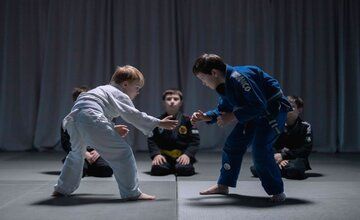Letters And Lessons

Dear future Daniel,
I hope this letter finds you well. I am Daniel from the present, writing an open letter to remind you of how, at the age of 30, you came to become a lecturer of Art History at a local communication design college. As always, beginnings are hazy. Were your ancestors a class of poets, painters, artisans, and scholars? Who knows? You can only tell that your grandparents were simple first generation Chinese migrants, whose main goal was to start a new life in a new country.
Both your parents were the eldest child in their families. They sought jobs in Kuala Lumpur to help support their big families living in small towns. By the time you came along in 1979, they had advanced into the middle class bracket, largely thanks to father’s small business dealing with air conditioning. Looking back at your roots, you found no known history relating to foreign exposure, higher education, or the arts. As you grew up, the third generation of your Malaysian Chong family would open such pathways.
Amy, the eldest, did not finish college, yet ventured to work in England and Japan. Bernard, your eldest brother, went to England and returned with a degree in Law. Christopher, your second brother, who drew since childhood, did a diploma in Graphic Design locally and is working in advertising today. When it came to your turn to choose your path after SPM, you decided to study Art History. Why such an obscure subject? As a child, your exposure to Christopher’s drawing habits was a big influence. Winning an international children’s art competition reinforced that interest. However, by your early teens, you were more preoccupied with reading and became rather bored by your incessant doodles of giant robots and manga girls. Thankfully, your interest in art received a second jolt of life when you conducted research for your PMR projects at the Kuala Lumpur Memorial Library.
You discovered a series of books, shelved away in a corner, containing beautiful colour reproductions of great masterpieces by the geniuses of art. Since then, discovering humanity’s long journey through such magnificent creations has never ceased to stimulate your imagination and make your skin tingle. Other places near the library also fuelled your passion: namely, the National Art Gallery and the early Petronas Gallery. To convince your parents to support your pursuit of an impractical field of studies, you had to score well for your SPM. You discovered the job prospects for art history degree holders by interviewing people in the art field, applying for an internship in the National Art Gallery, and working part-time in an art gallery.
In college, you took a variety of courses in your college’s American University Transfer Programme to be sure that you were not being too obsessed or narrow-minded. When the time came, you left to study the subject overseas. Local colleges did not offer Art History degrees and scholarships did not sponsor such subjects. Despite the massive cost, you managed to get through with the help of your family, some financial aid, part-time jobs, and being as frugal as your grandparents were when they arrived in a new country. Upon your return from Paris in 2004, you found a job at a leading local private art gallery. You were the Resource Manager in charge of the gallery’s small art library and public outreach programme. Despite the very modest salary, it was wonderful that you could continue your love affair with books and art.
Nonetheless, trying to share your passion with the public proved difficult as libraries became unpopular in the internet age. Working closely with something you love can also destroy its charm. The longer you stayed on that job, the less you read, and art became cold merchandise. Thus, your job performance deteriorated, and the gallery would discontinue your service. Somehow, this feeling was not true when you were teaching. At first, teaching was something you did for additional income. The more teaching jobs you took on, the more you felt alive and in love with art and reading again.
Everything that had accumulated in you through your travels, studies, and experiences could now be imparted to hundreds of eager students.
Ironically, despite all that time spent in libraries and museums, the most important lesson you can teach today is that art is not something exclusive to artists or found only in galleries; just as everything and everyone has a history, art can be made by anyone and found in anything. All you need is curiosity, an open mind, and close attention to the things that make your skin tingle. Daniel, I hope that decades later, you will be reminded of this path you took, and continue to share with others the things that have enriched you most in life.
Sincerely, Daniel Chong
Jun 28, 2009
Check out this inspiring video below
Note: The above letter was published in 2010 for What’s After SPM?, published by Leaderonomics. This non-for-profit book project is a collaboration between Leaderonomics and a team of young Malaysians. Click here for details on the project and authors. To read more "What's After SPM" articles, click here.
Personal
Tags: What's after SPM





